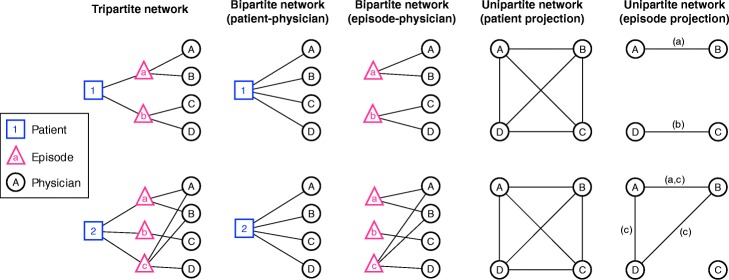Fig. 1.
Schematic of different network types associated with physician encounter data. Here the underlying physician visit sequence for Patient 1 is A, B, C, D, and these visits are associated with episodes a, a, b, b, respectively; the physician visit sequence for Patient 2 is A, B, C, A, C, D, B, and the associated episode sequence is a, a, b, c, b, c, c, respectively. The tripartite network connects a patient to one or more episodes, and each episode in turn is connected to one or more physicians. Tripartite networks provide the most complete presentation of the data and preserve all relevant information for network construction. The tripartite network can be projected to three different bipartite networks, each generated by omitting one node type from the tripartite network; here two bipartite networks are shown, one connecting patients and physicians and the other connecting episodes and physicians. Finally, any bipartite network can be projected to two different types of unipartite networks containing nodes of only one type. Here we show one projection for each bipartite network, the projections where the remaining nodes are physicians who are connected either by shared patients or shared episodes. Because of the organization of the tripartite network, we stress that all physician-physician ties are induced by shared patients, but the episode-based approach stipulates the additional constraint that only patients shared within episodes should count

